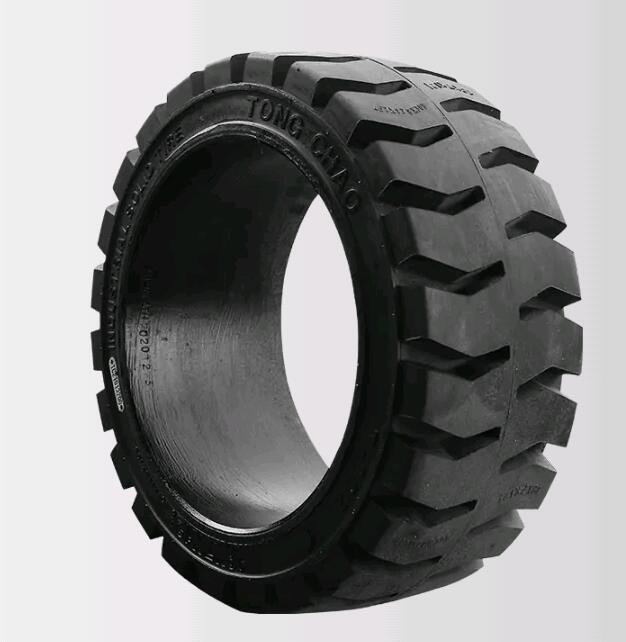One of the most defining characteristics of press-on solid tires is their resistance to punctures. Since they are not filled with air, there is no risk of deflation due to sharp objects, nails, or debris. This feature makes them particularly suitable for environments such as warehouses, factories, recycling yards, and construction sites, where floor conditions may be unpredictable.
Their solid construction also gives them an extended lifespan compared to pneumatic tires. The lack of air pressure fluctuations contributes to consistent performance throughout their service life.
Press-on solid tires are capable of handling heavy loads without deformation. Their dense structure distributes weight evenly, which makes them ideal for use in forklifts, industrial trucks, and other material handling equipment. The metal base ring adds structural integrity, ensuring the tire maintains its shape even under continuous, heavy use.
Unlike pneumatic tires, which require regular air pressure checks and occasional patching, press-on solid tires are virtually maintenance-free. Once installed properly, they require minimal attention aside from routine inspections for wear. This characteristic reduces equipment downtime and contributes to operational efficiency.
Press-on tires are typically smaller and have a lower profile than their pneumatic counterparts. This compactness allows for a smaller turning radius, which is advantageous in tight spaces such as warehouse aisles. Their design also contributes to the overall stability of the vehicle by keeping the center of gravity low.
Although they do not offer the deep treads of pneumatic off-road tires, press-on solid tires can be manufactured with different tread patterns or smooth surfaces depending on application requirements. Smooth tires are often used indoors on clean, flat surfaces, while patterned treads may be chosen for slightly uneven or wet surfaces to improve traction.

https://www.zjtcgm.com/product/press-on-solid-tire/18x7x12-1-8-high-resilient-press-on-solid-tire.html
The Smooth profile provides a greater contact area with the work surface, offering better load distribution and increased stability. The larger footprint area creates better traction in most applications for starting and stopping.